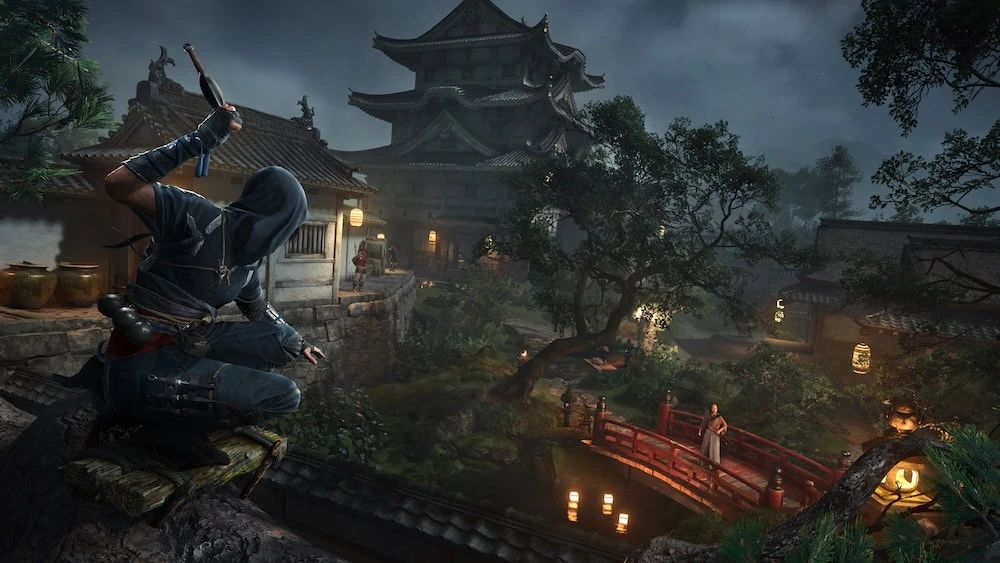Assassin’s Creed: Shadows
Stellar, and offers lessons for other games
“Thank you for believing in me.”
“I always have. Only now can I show you how much.”
—Naoe and Nagato in ‘Shadows’
Not too many people seem to be talking about the things Assassin’s Creed: Shadows got right—the subtle things anyway—with all the focus on how many players it drew in or how it might or might not save Ubisoft from selling in part to Tencent. The last time I wrote at length about a video game was Assassin’s Creen: Odyssey which perhaps goes to show I really like these games. Since then I have enjoyed Valhalla and, perhaps just a bit more, the smaller scale follow-up Mirage. They are all some of the most inclusive games I have seen for individuals with colour blindness and other such quirks, and they have all always, unapologetically been historical fiction, a genre I enjoy unequivocally.
Shadows is not a different Assassin’s Creed; it is more of the same but better. This is a formula more people can benefit from learning (and, at least, EA seems to only ever accomplish the first half). The common themes, techniques and expectations do not subvert from the enjoyment Shadows offers. Indeed most people are not looking for an unrecognisably different game each time. When I get into an Assassin’s Creed game I know what I am in for and there is some comfort in knowing that it offers the perfect balance of the familiar, the novel and the challenging.
One of the biggest complaints I have had about video games lately have been their inability to model hair correctly. EAFC 25, for example, makes hair look like sticky blobs combed with honey. So do the older Assassin’s Creed games for that matter, but I want to compare like-for-like with two contemporary games. In Shadows the hair, at least for the major characters, is incredibly well done. The thinness, the play of individual strands, their responses to the environment and intertia are all top-notch. This is the first time I have seen a game design human hair to look so natural.
Along the same vein are clothing. Once again, think of EAFC 25 and how the clothes ‘move’ only on occasion if they ever do. More often than not they ‘stick’ to the character and are part of their body in many ways. And when they do move they do so in repetitive, clearly pre-recorded ways. There is no interaction with the environment or—in a game like football—with a player’s movements. Not so in Shadows: the clothes feel appropriately heavy, and wave with the breeze, soak and set with the rain, or flutter in the harsh winds blowing along the Japanese landscape.

Speaking of wind, Shadows in many ways reminds me of Kurasawa’s films1—Throne of blood or Yojimbo—with the way the grass moves, the people shuffle around or our protagonists ease into and out of numerous situations. The environment is central to this game and it shows. It demands to be taken in, to be noticed. And that elevates the gameplay considerably.
Finally the name itself: Shadows is not just a fancy name but a marker for one of the finest details in the gameplay. In Shadows the shadows matter. There is an ‘immersive mode’ that allows you to play with characters speaking their native tongue (and is the mode I am playing in myself) but there is another aspect to the immersion that the game deploys regardless of whether you have the namesake mode turned on: the play of light and shadow, like the rest of the environment, actually matters. You can hide in shadows, you can keep to the shadows, you can watch light fall—thanks to ray-tracing—exactly as you would expect in real life and use it to your advantage. You can look through doors when lights are on inside and you can extinguish lamps to orchestrate the darkness to your advantage.
This extends far beyond buildings: even trees under the moonlight or boulders or vast fields cast shadows that are unique, dance with the wind, and can influence your characters movement allowing you to truly blend into the environment in ways you could not do in previous Assassin’s Creed—or any other—games where you were left trying to develop an understanding of how the computer, rather than nature, thinks shadows fall and behave.
On top of all this are the changing seasons. You can do some things in some seasons that you cannot do in others. Dive and hide underwater, breathing through a reed, in summer and spring. Come winter, you have a sheet of ice instead and you need to either find a different approach or plan to return at a more opportune time.
I cannot say if Shadows can make any difference for Ubisoft, and this article is not to sing praises of the company. But I do wish to sing praises for the artists, historians, writers, developers and other creatives who poured their heart into making this game. Once again, this Assassin’s Creed game was worth it.
I am aware that Ghost of Tsushima took direct feedback from the Kurasawa trust and I have heard a lot good things about the game but, being on Xbox, I have never played it. ↩